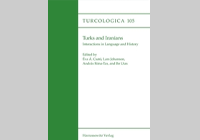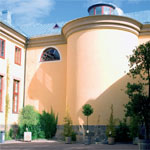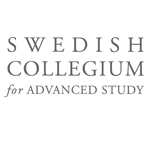
SCAS News - 29 January, 2016
New Book by Former SCAS Fellows - A Result of the Gunnar Jarring Programme
Harrassowitz Verlag has recently published Turks and Iranians: Interactions in Language and History
(Turcologica 105; 2016), a volume containing contributions presented at the workshop "Turco-Iranica:
Language and History" and the following symposium "Turks and Iranians: A Common Historical and
Linguistic Heritage", which were both organized by the Swedish Collegium in the spring of 2006. The
events were held within the framework of the Collegium's Gunnar Jarring Programme, a research
programme focusing on the languages and civilizations of Central Asia.
Through the Jarring programme the Collegium hosted thematic groups with an orientation towards
interactions involving the peoples of Central Asia, both during the spring term of 2001, and in the
academic years of 2005/06 and 2007/08. The researchers came from different fields, such as linguistics,
ancient and medieval history, archaeology and genetics.
The new book is edited by four of the former SCAS Fellows who were involved in the Gunnar Jarring
programme,
namely Éva Á. Csató (in residence in the spring of 2006), Lars Johanson (in residence during
the spring terms of 2001 and 2006), András Róna-Tas (in residence in the autumn term of 2005) and Bo
Utas (in residence in the springs of 2001 and 2006). Furthermore, it contains articles by a number of other
former SCAS Fellows, among others.
ABOUT THE BOOK:
'The contributions by an international group of leading scholars discuss the historical and cultural
relations of old and modern Turkic and Iranian languages. A main topic is how contacts of spoken
and written languages from pre-Islamic times until various periods of the Islamic era have influenced
the emergence and development of Iranian and Turkic varieties. The purpose is to contribute to a
better understanding of the interrelations between cultural-historical contacts and linguistic processes,
and to stress the necessity of cooperation between experts of Turkic and Iranian studies.'






